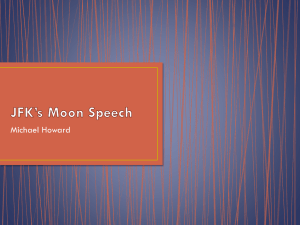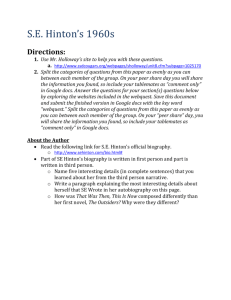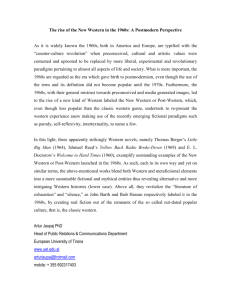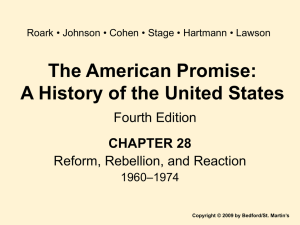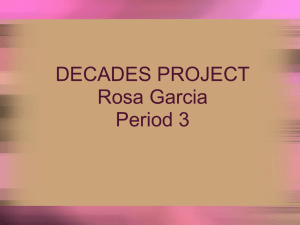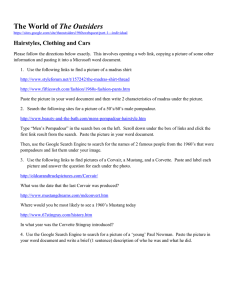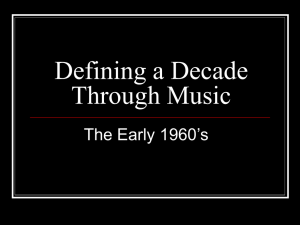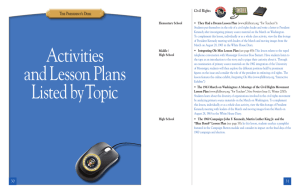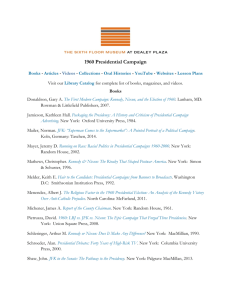The Century: America's Time - Poisoned Dreams | Classroom Resource
advertisement
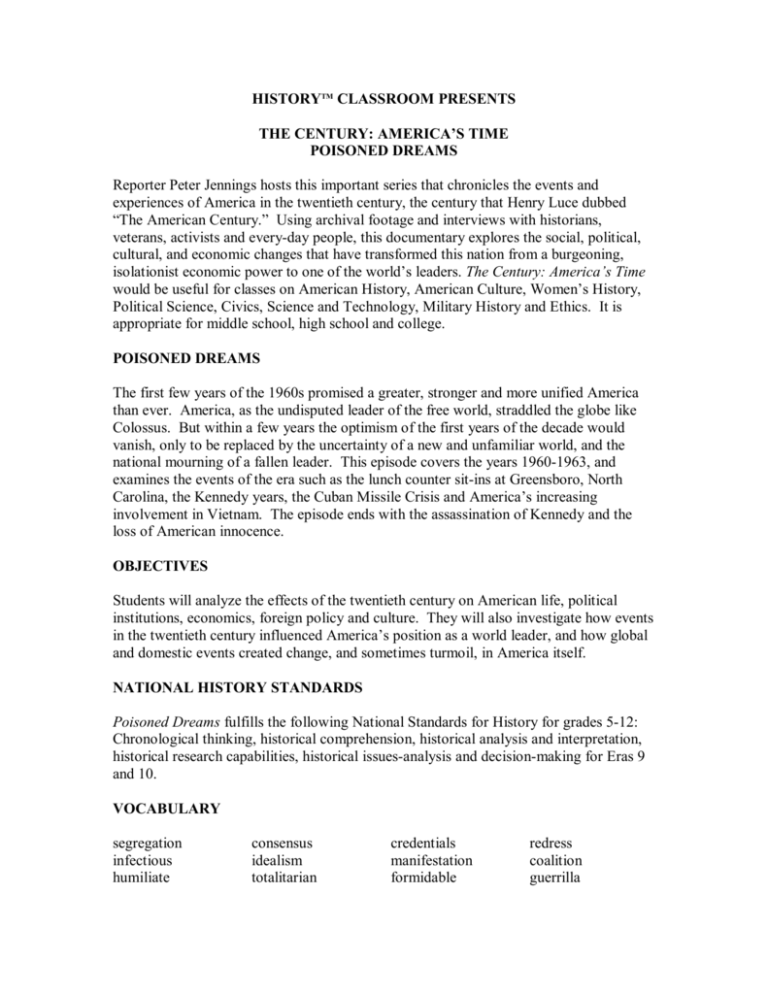
HISTORYTM CLASSROOM PRESENTS THE CENTURY: AMERICA’S TIME POISONED DREAMS Reporter Peter Jennings hosts this important series that chronicles the events and experiences of America in the twentieth century, the century that Henry Luce dubbed “The American Century.” Using archival footage and interviews with historians, veterans, activists and every-day people, this documentary explores the social, political, cultural, and economic changes that have transformed this nation from a burgeoning, isolationist economic power to one of the world’s leaders. The Century: America’s Time would be useful for classes on American History, American Culture, Women’s History, Political Science, Civics, Science and Technology, Military History and Ethics. It is appropriate for middle school, high school and college. POISONED DREAMS The first few years of the 1960s promised a greater, stronger and more unified America than ever. America, as the undisputed leader of the free world, straddled the globe like Colossus. But within a few years the optimism of the first years of the decade would vanish, only to be replaced by the uncertainty of a new and unfamiliar world, and the national mourning of a fallen leader. This episode covers the years 1960-1963, and examines the events of the era such as the lunch counter sit-ins at Greensboro, North Carolina, the Kennedy years, the Cuban Missile Crisis and America’s increasing involvement in Vietnam. The episode ends with the assassination of Kennedy and the loss of American innocence. OBJECTIVES Students will analyze the effects of the twentieth century on American life, political institutions, economics, foreign policy and culture. They will also investigate how events in the twentieth century influenced America’s position as a world leader, and how global and domestic events created change, and sometimes turmoil, in America itself. NATIONAL HISTORY STANDARDS Poisoned Dreams fulfills the following National Standards for History for grades 5-12: Chronological thinking, historical comprehension, historical analysis and interpretation, historical research capabilities, historical issues-analysis and decision-making for Eras 9 and 10. VOCABULARY segregation infectious humiliate consensus idealism totalitarian credentials manifestation formidable redress coalition guerrilla retaliatory quarantine mandate insurgent DISCUSSION QUESTIONS 1. In 1960, in Greensboro, North Carolina, young African-American students demonstrated against segregation by sitting at luncheon counters that only served white patrons. Why were some white Americans, especially in the South, so opposed to integration? 2. How could young African-Americans be “freed” by being arrested and put in jail? 3. The early 1960s were unique in that it was truly a youth culture. Discuss some ways in which this is evident. 4. What is a “cold warrior?” How were both John F. Kennedy and Richard Nixon cold warriors? 5. John F. Kennedy was one of America’s most popular presidents. Why was JKF so popular? What was his special appeal? 6. Discuss the role of television in the 1960 presidential election. How does television influence the political scene today? 7. Psycho was one of the most popular movies of the early 1960s and remains a cult classic to this day. Why was this movie so popular? 8. Why did the Soviet Union erect the Berlin Wall? 9. Who were the Freedom Riders? What were their objectives? How are they true American heroes? 10. What is the “domino theory?” How did this theory influence American foreign policy in the 1960s? 11. Discuss the power of song in the Civil Rights Movement of the 1960s. 12. How did JFK’s death affect America? What was the impact of this national loss? 13. Why was JFK’s assassination the day America “lost its innocence?” EXTENDED ACTIVITIES 1. Design a newspaper headline for the 1960 sit-ins in Greensboro, NC. 2. Reenact the 1960 presidential debates between John F. Kennedy and Richard Nixon. 3. Create a poster advertisement for the movie Psycho.
